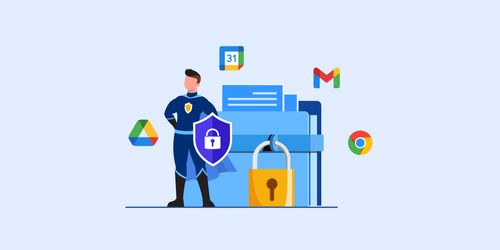In the ever-evolving digital age, where communication and transactions have largely migrated online, the threat of phishing email verification scams looms larger than ever before. Phishing attacks continue to target unsuspecting individuals and organizations, causing financial losses, data breaches, and untold damage to reputations. In this comprehensive guide, we will explore the world of phishing email verification scams, providing expert insights, real-life examples, and answers to frequently asked questions. By the end of this journey, you'll be equipped with the knowledge and tools to protect yourself and your organization from these insidious threats.
Understanding Phishing Email Verification
Phishing email verification is a deceptive tactic used by cybercriminals to trick individuals into revealing sensitive information, such as login credentials, personal details, or financial data. These scams often involve the following key elements:
Mimicking Legitimate Entities: Phishers impersonate reputable organizations, government agencies, or well-known brands to gain the trust of their targets.
Urgency and Threats: Phishing emails often create a sense of urgency, threatening dire consequences if the recipient doesn't act immediately. This urgency can cloud judgment and lead to hasty actions.
Email Verification: Phishing emails may request recipients to verify their email accounts, update passwords, or confirm personal information. These requests are designed to appear legitimate but are actually attempts to steal sensitive data.
Recognizing Phishing Email Verification Scams
Identifying phishing email verification scams is crucial for your online security. Here are some telltale signs to watch out for:
Generic Greetings: Legitimate organizations often use your name in their emails. Be cautious of emails that use generic salutations like "Dear Customer" or "User."
Misspelled Words and Grammar Errors: Phishing emails often contain spelling and grammatical mistakes, which are rare in communications from reputable sources.
Suspicious Links: Hover your mouse over links in the email without clicking. If the URL doesn't match the official website of the supposed sender, it's likely a phishing attempt.
Urgent Calls to Action: Beware of emails that create a sense of urgency, such as threatening to suspend your account or claiming unauthorized access.
Check the Sender's Email Address: Examine the sender's email address closely. Phishing emails may use domains that resemble legitimate ones but have slight variations.
Real-Life Examples of Phishing Email Verification
To illustrate the gravity of phishing email verification scams, let's look at some real-life examples:
PayPal Phishing: Scammers impersonate PayPal and send emails claiming that your account has been compromised. They ask you to verify your email address and password, giving them access to your PayPal account.
IRS Impersonation: Phishers send emails pretending to be from the Internal Revenue Service (IRS) and claim that you owe back taxes. They request personal and financial information for "verification" purposes.
Banking Scams: Cybercriminals impersonate banks and financial institutions, urging you to verify your login credentials. Falling for these scams can lead to financial losses.
Protecting Yourself Against Phishing Email Verification
Now that you know how to recognize phishing email verification scams, let's explore proactive steps to protect yourself:
Stay Informed: Keep up with the latest phishing trends and educate yourself about common tactics used by cybercriminals.
Use Email Verification Services: Leverage email verification services to validate the legitimacy of incoming emails and detect phishing attempts.
Enable Two-Factor Authentication (2FA): Implement 2FA for your online accounts to add an extra layer of security, making it more challenging for phishers to access your accounts.
Verify Email Requests: If you receive an email requesting sensitive information, independently verify its authenticity by contacting the organization directly through official channels.
Report Suspicious Emails: Report phishing attempts to the appropriate authorities or organizations, such as the Anti-Phishing Working Group (APWG) or the Federal Trade Commission (FTC).
Frequently Asked Questions
Let's address some common questions related to phishing email verification:
1. How can I report a phishing email?
Most email providers offer a way to report phishing emails. Look for options like "Report Phishing" or "Mark as Spam." Additionally, you can report phishing attempts to organizations like the FTC or your local cybersecurity agency.
2. What should I do if I accidentally clicked on a phishing link?
If you suspect you've fallen for a phishing scam, take immediate action. Change your passwords for the affected accounts, enable 2FA, and scan your device for malware. Also, report the incident to the relevant authorities.
3. Are there tools to prevent phishing emails from reaching my inbox?
Yes, many email security solutions offer phishing protection by filtering out malicious emails before they reach your inbox. Additionally, browser extensions and antivirus software can provide an extra layer of protection against phishing attempts.
4. Can businesses protect against phishing email verification for their employees?
Yes, businesses can implement email security measures such as DMARC, DKIM, and SPF to authenticate and verify incoming emails. Employee training on recognizing phishing attempts is also crucial.
5. What is spear phishing, and how does it differ from regular phishing?
Spear phishing is a highly targeted form of phishing where cybercriminals tailor their attacks to specific individuals or organizations. They often gather information about their targets to make the scam more convincing.
Conclusion
Phishing email verification scams continue to threaten the digital landscape, but with knowledge, vigilance, and the right security measures, you can protect yourself and your organization from falling victim to these malicious tactics. By staying informed, recognizing the signs of phishing attempts, and taking proactive security measures, you can navigate the online world with confidence, knowing that you are well-prepared to defend against these cyber threats.



